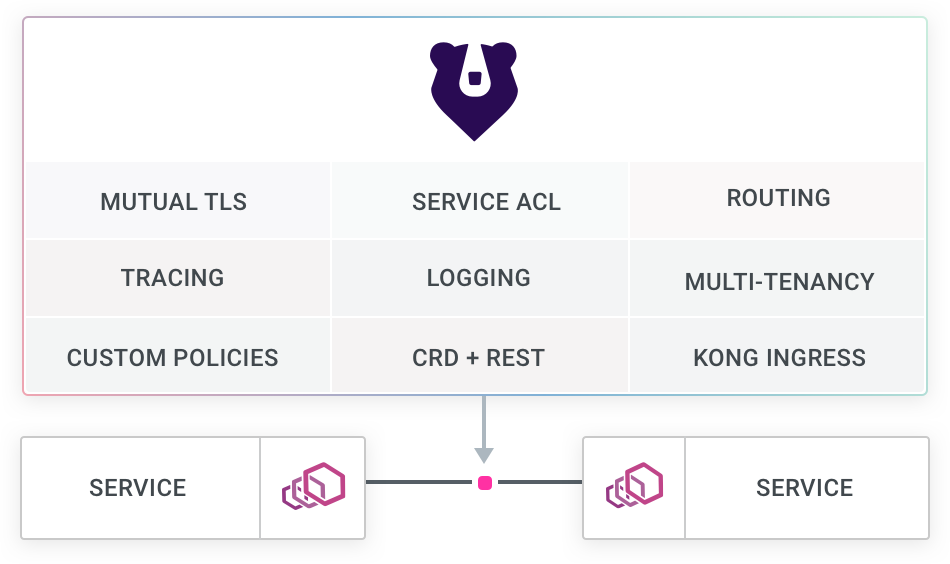Careful!
You are browsing documentation for a version of Kuma that is not the latest release.
Overview of Kuma
Kuma is a platform agnostic open-source control plane for service mesh and microservices management, with support for Kubernetes, VM, and bare metal environments.

Kuma helps implement a service mesh approach to distributed deployments as part of the move from monolithic architectures to microservices. You can run a service mesh with Kuma before you start decomposing your monolith, which helps keep your network secure and observable as your architecture changes. Kuma is:
- Universal and Kubernetes-native: Platform-agnostic, can run and operate anywhere.
- Standalone and multi-zone: Supports multiple clouds, regions, and Kubernetes clusters with native DNS service discovery and ingress capability. A zone is a deployment unit like a Kubernetes cluster, VPC, or data center.
- Multi-mesh: Supports multiple individual meshes with one control plane, lowering the operational costs of supporting the entire organization.
- Attribute-based policies: Let you apply fine grained service and traffic policies with any arbitrary tag selector for
sourcesanddestinations. - Envoy-based: Powered by Envoy sidecar proxies, without exposing the complexity of Envoy itself.
- Horizontally scalable
- Enterprise-ready: Supports mission critical enterprise use cases that require uptime and stability.
Bundling Envoy as the data plane, Kuma can instrument any L4/L7 traffic to secure, observe, route and enhance connectivity between any services or databases. It can be used natively in Kubernetes via CRDs or via a RESTful API across other environments.
Example of a multi-zone deployment for multiple Kubernetes clusters, or a hybrid Kubernetes/VM cluster:

The core maintainer of Kuma is Kong, the maker of the popular open-source Kong Gateway 🦍.
